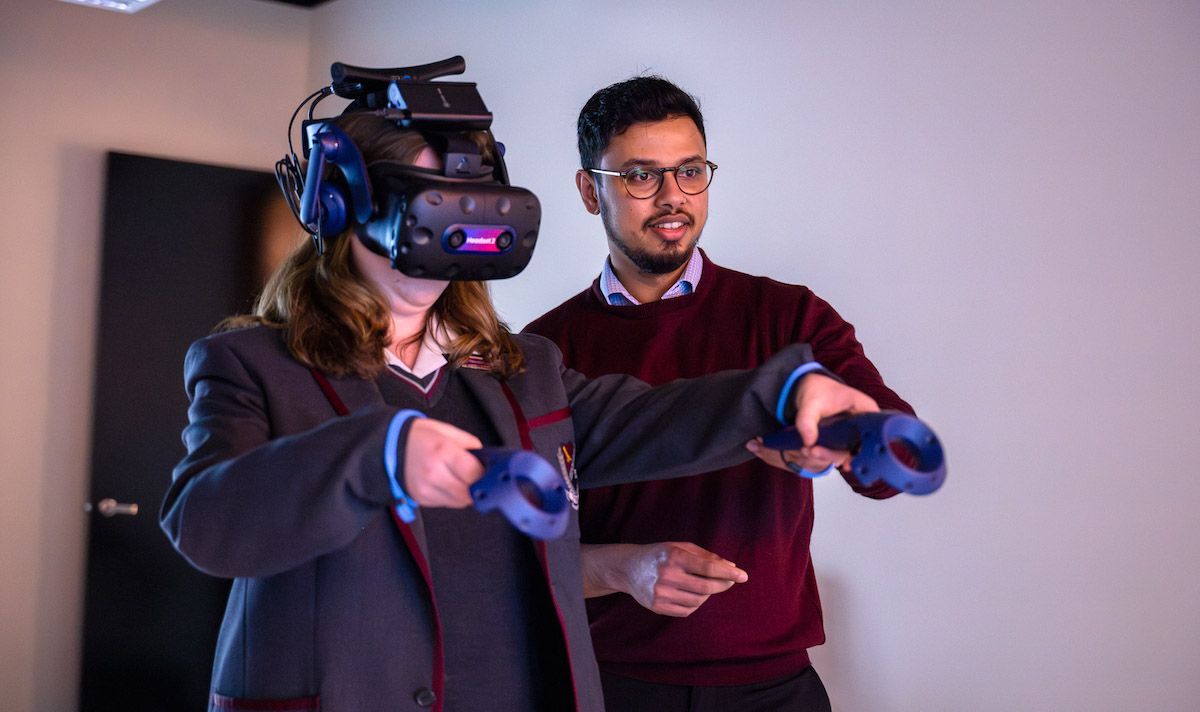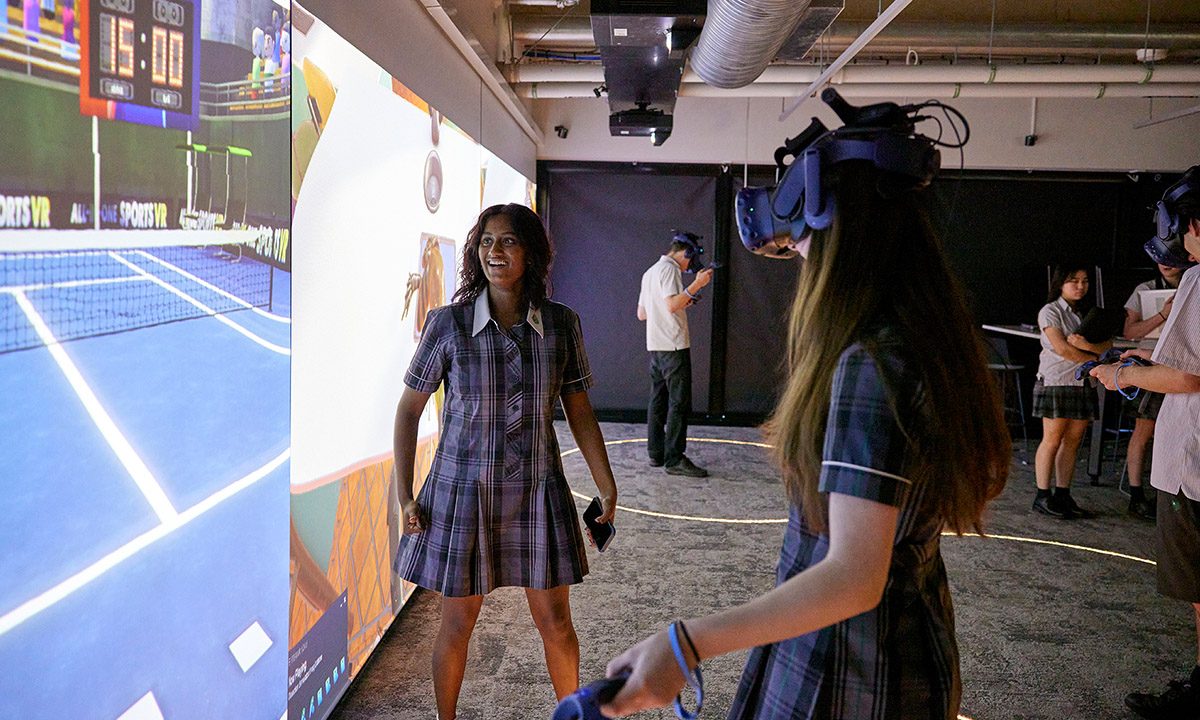Author: Lumination
Date: 25th May 2023
Taking Care of Young Learners and Optimising Virtual Reality Safety in Education
There’s something naturally engaging and exciting about virtual reality (VR) technology — about the ability to step inside an image, video or a piece of interactive media and experience something different. For young people still in the early phases of their learning journey, this excitement and engagement become even more enticing. Since 1939 and the first View-Master headsets, to 1956 and the Sensorama experience, through to 1974 and the Maze War VR game and 2016 and the arrival of Vive, VR has been providing young people with novel, even transformative, experiences.
Today, the technology has moved way beyond the capabilities of 80, 70 or even just a few years ago. Now, VR technologies are widespread, not just in entertainment — but in training, education and development applications too. Once again, it is young people who are driving this growth, and children and adolescents are some of the key consumers of this tech. This leaves us with two very important questions:
- How do we help young people get the best out of the VR learning experience?
- How do we ensure optimal levels of safety for children and adolescents as they engage with this tech?
Read on as we explore how we can prioritise virtual reality safety with these new technologies.
Understanding Virtual Reality and Its Challenges
Before we begin, let’s briefly define exactly what VR is. Virtual reality is a digitally generated environment that creates scenes and objects offering the appearance and impression of reality. Users wear a VR headset that relays these images to them, creating a VR experience that is more immersive than static pictures of two-dimensional video playback.
It is this concept of immersion that tells us a little bit about the challenges associated with VR. VR can provide relatively intense experiences, both in a sensory and psychological sense. This means VR safety is something we’ll need to bear in mind as the technology develops further in the future.
Finding Real Solutions for Virtual Reality Safety Challenges
So what can these virtual reality safety challenges look like, and how can we solve them? To make sure students are making the most out of VR, we need to be aware of any concerns and take steps to mitigate them.
Motion
Virtual reality is a digitally generated environment with scenes and objects that appear to be real, making the user feel they are immersed in their surroundings. This environment is perceived through a device known as a virtual reality headset.
The majority of users will never experience any feeling of discomfort. Scientists are not 100% certain why motion sickness occurs, but there are easy and effective methods of dealing with it.
To eliminate the possibility of motion-related dizziness, it is recommended that students take breaks and avoid using VR for prolonged periods of time. This is important to understand when it comes to virtual reality safety. The station-based learning approach offered in a Lumination Learning Lab makes this easy to achieve, helping students take the breaks they need while remaining engaged with these new technologies.
Vision
A common question we often hear regarding our Lumination Learning Labs is this: can students with glasses or contact lenses use the technology? Does this demonstrate virtual reality safety usage? The simple answer is yes. There are no barriers to those wearing contact lenses or glasses, as headsets will fit over any glasses.
For every user, there are adjustable lenses and a setting called interpupillary distance (IPD), which helps make images appear clear and reduce any issues associated with eye strain. The dial on the headset can be quickly and easily adjusted to provide a comfortable experience for all, including those wearing glasses or contact lenses. It can take up to 21 years for our eyes to fully develop, so these measures are important in supporting a great experience for all young learners.
Content
The use cases of virtual reality in the classroom are almost limitless. New content is being produced every day, creating a truly rich set of experiences. Our team of former teachers with decades of classroom experience carefully curates and selects experiences that are suitable for students, and that align directly with curriculum outcomes.
For schools with a Lumination Learning Lab, the LeadMe tablet controls every aspect of the room and comes pre-loaded with experiences that can be initiated at the touch of a button. Our Lumination Education Centre also hosts a range of lesson plans and guides for teachers. This helps to guide them when choosing content for the subject they teach, aligning with specific learning outcomes. In turn, this ensures all lessons remain relevant and age-appropriate.
Movement
One of the most exciting aspects of virtual reality technology for young learners is the ability to move through experiences. This means: stepping onto an international space station, walking around artworks, flying over cityscapes, diving into the ocean depths or looking into the human body. The key here is to make sure there are no obstacles or hazards in the space being used. Understanding this allows virtual reality safety usage.
Within our Lumination Learning Labs virtual reality safety has been considered with the illuminated rings circle the floor. This is the safe area. If a student gets too close to the edge of the circle inside the virtual headset, a virtual barrier will appear, indicating to step slightly back. This prevents any issues with people running into objects or straying outside of the scope of the experience.
Virtual Reality Safety in Education: Our Recommendations
As we’ve touched on above, VR technology has been around for quite some time, but is increasingly widespread — and more immersive. We’re seeing real benefits and advantages after using VR technology in education.
The “Health and Safety of VR Use by Children in an Educational Use Case” study (Rauschenberger & Barakat, 2020) — examined the responses to virtual reality safety. VR was deployed in a structured and limited way for students aged 10 to 12 years old over periods of 30 minutes per day for five consecutive days. During and following this period of exposure, researchers did not find any adverse visual, spatial representational or balance aftereffects. Researchers also did not find any evidence that VR is a direct cause of undue nausea, oculomotor discomfort, or disorientation.
This suggests that there is nothing in the fundamental nature of VR technology that makes it harmful in the classroom. We have found that our own experiences with using the tech and the anecdotal evidence we have received during the development of our Lumination products support this. We created the Lumination Learning Lab as a way to support safe AR and VR usage in the learning environment, overseen by the LeadMe software that puts teachers in control. Our recommendation is one of care and supervision — optimise the learning experience for children aged 10 and above with a structured program of virtual reality. With this approach, you can deliver a myriad of benefits of virtual reality in the educational environment.
We love VR technology, and students find it especially exciting and energising. We can all benefit from VR with kids and adolescents having the most to gain.
As educators, with the right understanding of virtual reality safety in place, VR is not only enjoyable — it becomes a vital part of education for today’s students.
Find Out More About Lumination, and Take a Tour
Now you know about virtual reality safety, learn more about how Lumination’s products can elevate the learning experience for your students. Check out our resources (such as our VR-based lesson plans) and case studies (like our examination of how VR and AR technology increase empathy in the classroom), or get in touch today to book a demo and take a tour of our solutions.



